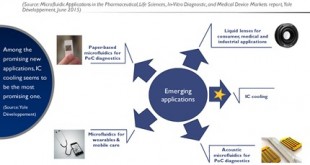Today’s generation of body-armour systems can provide protection at various levels designed to defeat most common low- and medium-energy handgun rounds. However, currently the highest-threat-level ballistic needs in the market are fulfilled by special, high performance ceramics that tend to be very costly, fragile for standard handling, extremely heavy and very difficult to shape to the requirements of an ergonomic design.
One of the widely used armor material is Kevlar that certainly represents a technological revolution not only for armour materials, but for many other important applications, from brake lining to space vehicles, including boats, parachutes, building materials, etc. However, one very important limitation of Kevlar, however, is its susceptibility to degradation due to UV exposure, environmental humidity and the chemicals contained in perspiration (sweat), the conditions that cannot be avoided during in-field operations. The challenge is, thus, too great for the standard technology of ballistic materials, as it can be corroborated by the fact that the leading industries in the field have spent years and enormous amounts of money to produce an environmentally stable garment to no avail.
Nanomaterials (NMs) have gained prominence in technological advancements due to their tunable physical, chemical and biological properties with enhanced performance over their bulk counterparts. NMs are categorized depending on their size, composition, shape, and origin.
Recently trend is to utilize nanofibre-reinforced systems that are expected to provide very attractive weight/protection relationships not only for personal equipment, but also for belly plates for motor vehicles and even aircrafts , exposed to the impacts caused by dust, birds and other objects, not necessarily by combat conditions, offering an interesting potential market for novel ballistic materials.
From the military point of view and according to a recent report, nanotechnology offers two important advantages: first, the potential to achieve high degrees of miniaturization, which will be reflected in the weight of the equipment and second, the possibility of finding unexpected effects at the nanoscale, which not only will represent a strategic advantage over the enemy, but will also include a possibility of concealing the technology behind a given effect.
Researchers in United States have found that Nano Aluminium Composite a superior material for tough and lightweight structural applications. This nano-treated aluminium can be an extremely efficient substitute for making aluminium hulls, aluminium superstructures and various other ship structures where light weight and high strength are highly desirable.
Researchers from the U.S. Army Research Laboratory and Arizona State University designed a super strong alloy of copper and tantalum that can withstand extreme impact and temperature. It’s likely the closest material on earth to vibranium, a rare, fictitious metallic substance found in Marvel’s Wakanda and used in Captain America’s shield.
Army scientists created a nanocrystalline alloy of copper and tantalum
Most structural metals experience sudden deformation when subjected to extreme impact and temperature, such as the force from an automobile accident or the impact that occurs during a ballistic event. When a typical metal deforms at a fast rate, it loses its ability to deform in a ductile way and becomes brittle, absorbing relatively little energy prior to fracture or failure.
This instability has motivated the multidisciplinary research team to improve the toughness of coarse-grained metals and alloys to prevent metal deformation and failure. They created a nanocrystalline alloy of copper and tantalum with engineering-enhanced properties to make it maintain a relatively consistent level of mechanical strength and microstructure stability.
Army scientists created a nanocrystalline alloy of copper and tantalum with grains of an average size of about 50 nanometers, arranged into clusters. This helps it maintain an exceptionally high and consistent level of mechanical strength and microstructure stability, withstanding extreme impact and temperature, such as in the case of projectiles or armor. This new super strong alloy doubles the material’s strength and stability, making it immune to the deformation response. The research was published by the journal Nature.
Its structure and deformation response make it a candidate for ballistic impact or protection applications for military vehicles or personal protection for Soldiers, said Dr. Kristopher Darling, a materials scientist with ARL’s Lightweight and Specialty Metals Branch.
The ARL team, which includes Darling, Drs. Cyril Williams and B. Chad Hornbuckle, joined with ASU’s Professor Kiran Solanki, Professor Pedro Peralta and six doctoral students in materials science and mechanical engineering on the recently published paper on the alloy in Nature Communications: “Anomalous mechanical behavior of nanocrystalline binary alloys under extreme conditions.”
Solanki, an associate professor in the Ira A. Fulton Schools of Engineering, is working on the copper and tantalum alloy, which has the potential to also be used on spacecraft for deep-space exploration. The same methodology can also be applied to other materials, such as nickel or iron, to develop more resilient transportation and sustainable infrastructures.
Darling said that even beyond the Army, “anywhere there’s high strength and good electrical conductivity is required, these alloys can be thought of as a model system who’s structure can be passed on to other alternative material systems. Materials based on iron or aluminum for instance could be used for protection and lethality applications.”
“The technical challenge was to make a material with an average grain size of about 50 nanometers (billionths of a meter) and remain stable when formed into usable parts or shapes,” said Solanki, a co-author of the paper.
The unusual combination of properties in the copper-tantalum alloy results from a processing route that creates distinct nanoclusters of tantalum. As temperature increases, these nanoclusters don’t significantly change in size or spacing, which leads to the material’s notable stability and strength.
“Within these very small grains, we built in a microstructure that’s even smaller than the grain size due to tantalum’s nanoclusters,” Darling said. “This doubles the material’s strength and stability, making it immune to the deformation response.”
The alloy can withstand high rates of impact and temperatures in excess of 80 percent of their melting point, which is higher than 1,073 kelvin or greater than 1,472 degrees Fahrenheit), with very little change in its microstructure.
Both papers cover an extreme type of deformation: a very slow strain rate where the material deforms gradually over long exposures to high temperatures versus a very fast strain rate where the material deforms rapidly. A slow strain rate can happen over the years such as when an infrastructure collapses due to its own weight. A fast strain rate can happen almost instantaneously, such as in a picosecond or nanosecond during ballistic events.
The copper-tantalum alloy was originally developed to replace copper-beryllium, a high-performance alloy known for its strength, conductivity, hardness and corrosion resistance. Copper-beryllium is critical for a range of applications, but the handling, manufacturing and machining of beryllium can cause a serious lung condition called chronic beryllium disease. Thus, the International Agency for Research on Cancer and the National Toxicology Program have designated the alloy as a carcinogen.
The team continues to work toward replacing copper-beryllium with an equally superior metal alloy with similarities in its mechanical properties of strength, conductivity, hardness and corrosion resistance. The copper-tantalum alloy is a step in that direction.
Through the teams’ combined efforts, society may soon have access to materials with superhero strength without compromising the well-being and health of the people manufacturing them.
High-density, thermodynamically stable, nanostructured metallic copper
Bulk nanocrystalline metals, alloys, and composites are of interest due to the exotic mechanical properties with which they are associated. Recent reports indicate that ultra-high strength and moderate ductility are possible in such metals. However, a major drawback to the commercialization of these unique materials is the inability to mass produce large quantities of bulk material. Currently, commercialized products have been limited to electrolytic coatings or steels where the spacing of the microstructural phases is on the nanometer scale.
One potential solution to higher production capability is with a novel high-density thermodynamically stable nanostructured copper-tantalum (Cu–Ta) or Cu-Fe metallic material developed by the Army. These materials may include a solvent of Cu metal that comprises 70 percent or more of the metallic system and a solute of Ta metal dispersed in the solvent metal. This metallic system is thermally stable, with the absence of substantial gross grain growth, such that the internal grain size of the solvent metal is substantially suppressed to no more than about 250 nm at approximately 98 percent of the melting point temperature of the solvent metal. Importantly, the solute metal remains substantially uniformly dispersed in the solvent metal at that temperature.
These various metallic systems can be formed in powdered form or bulk form via consolidating of resultant powder metal subjected to high-energy milling. The processing approach should enable the development of microstructurally stable structural alloys with high strength and creep resistance for various high-temperature applications, including in the aerospace, naval, civilian infrastructure and energy sectors.
 International Defense Security & Technology Your trusted Source for News, Research and Analysis
International Defense Security & Technology Your trusted Source for News, Research and Analysis

